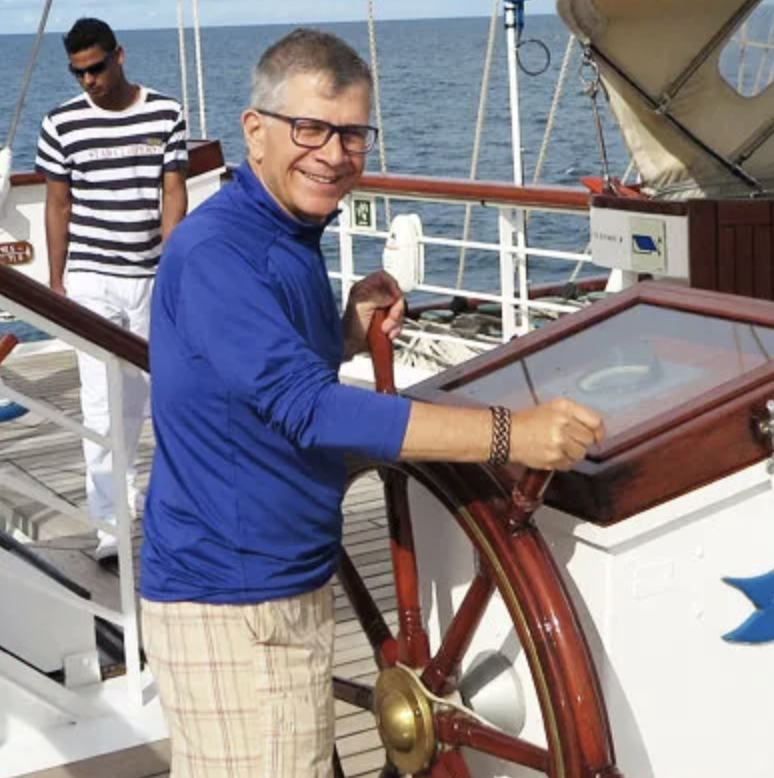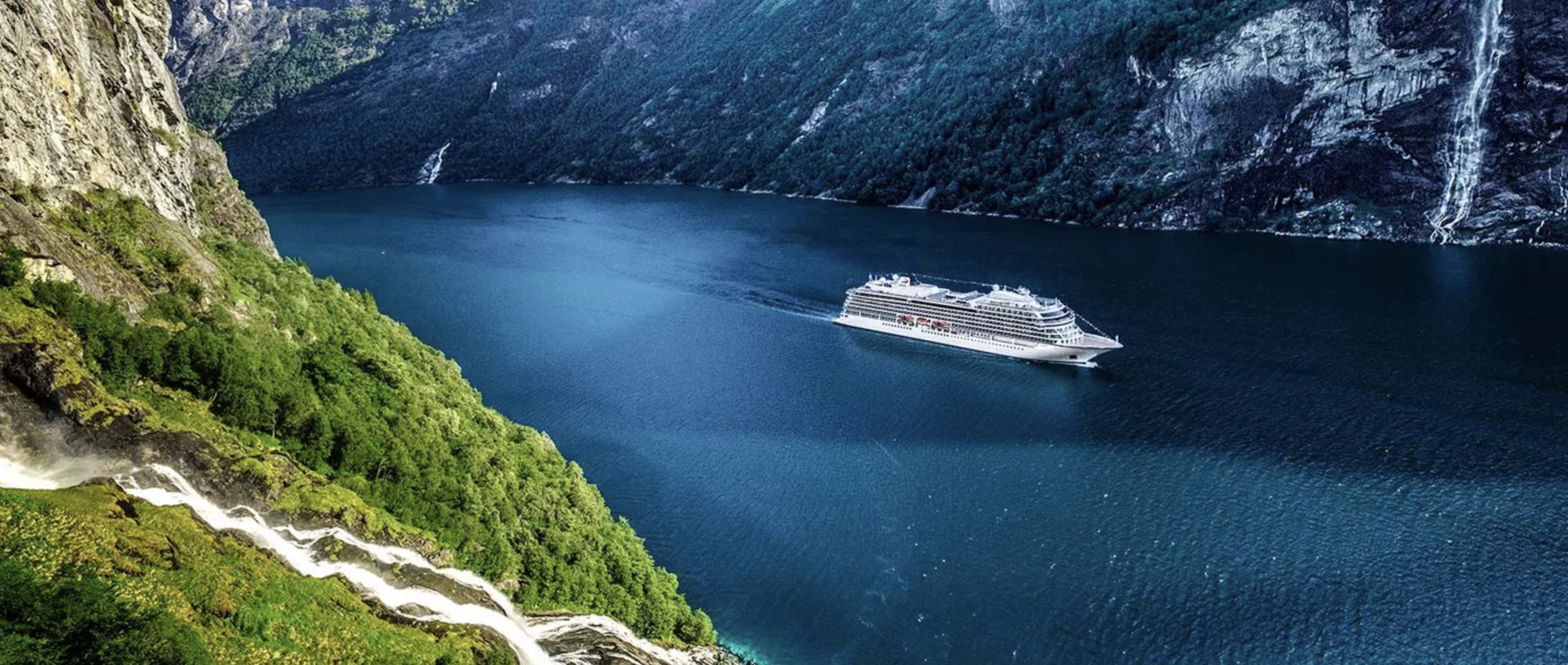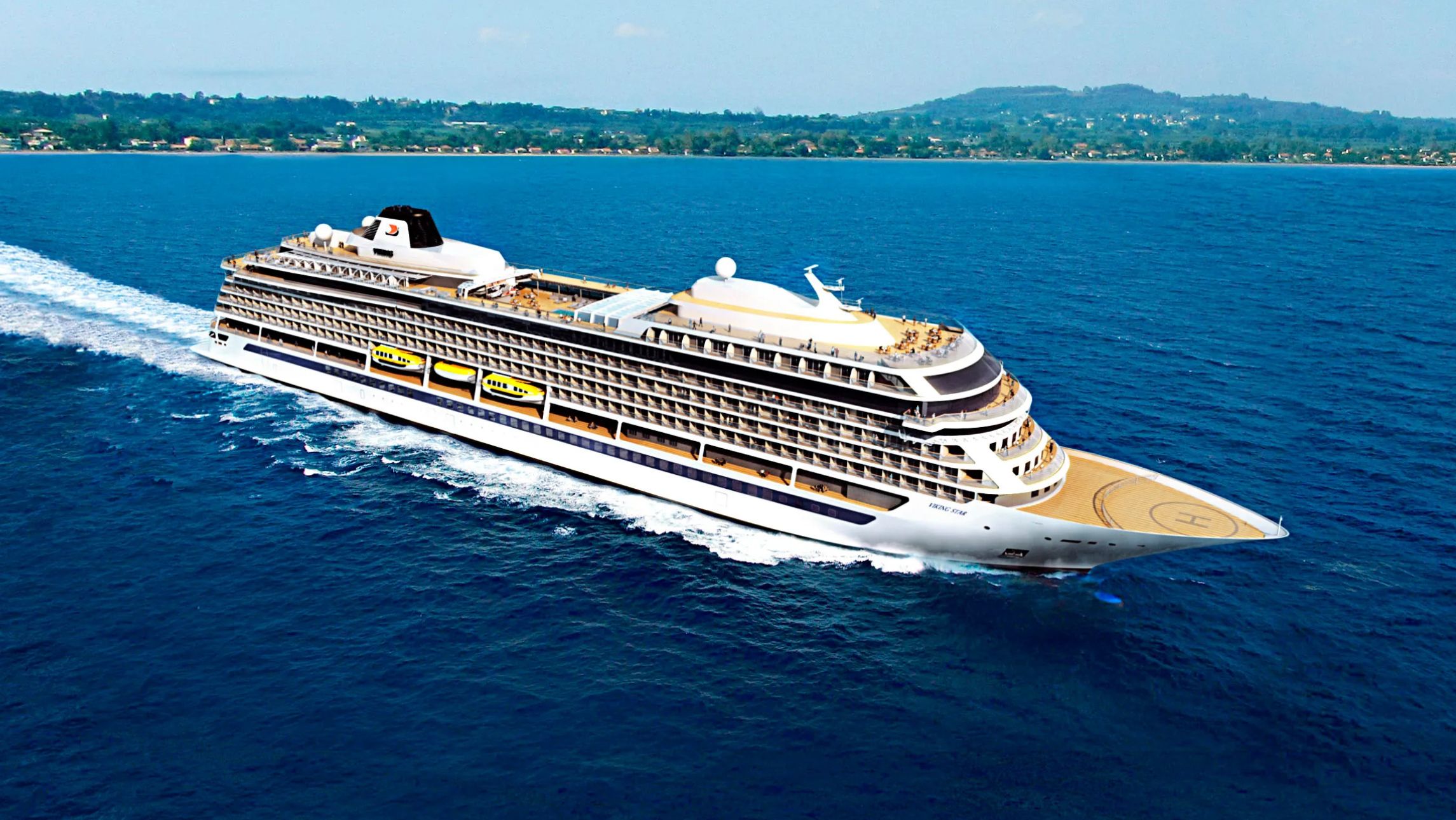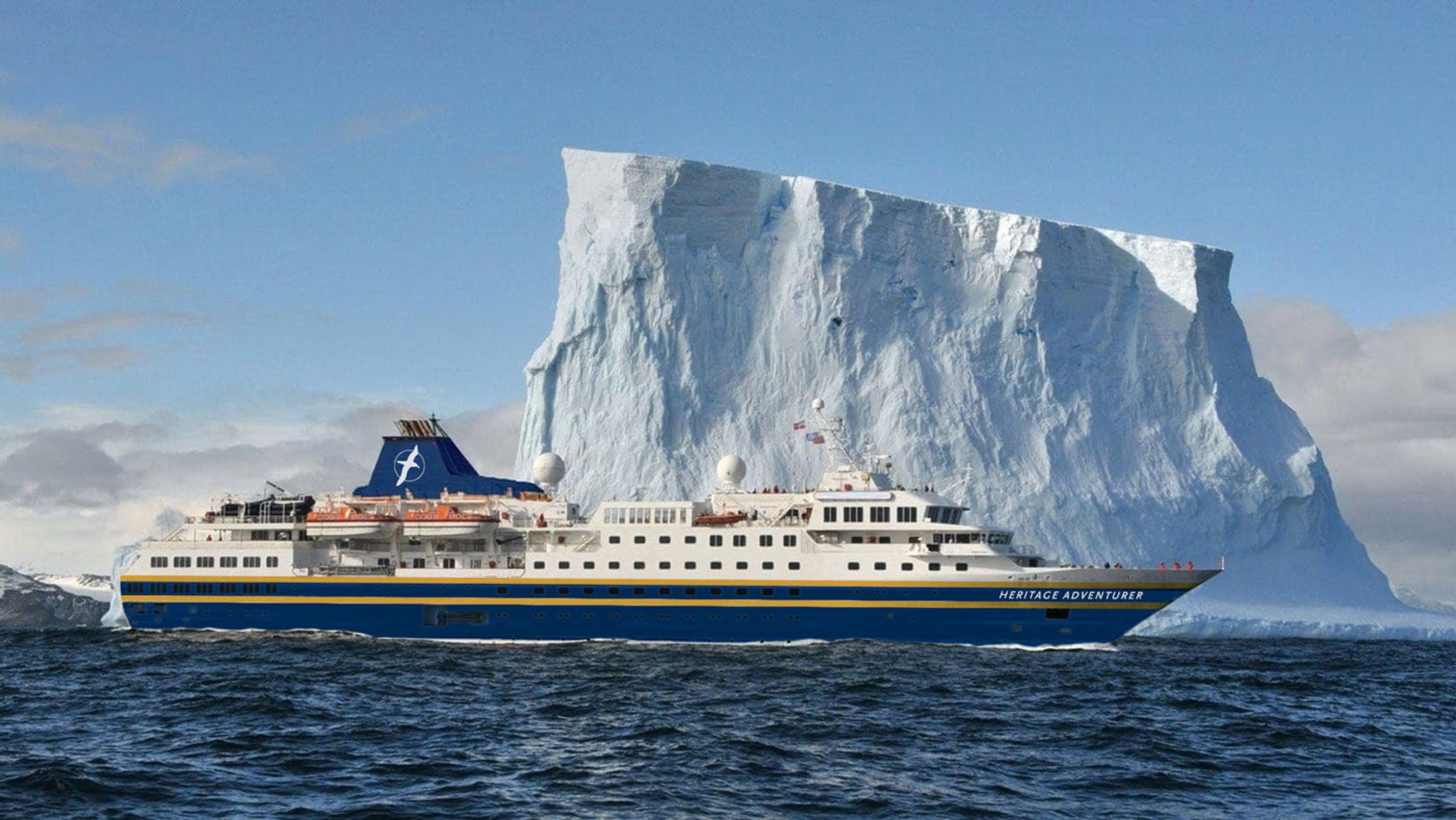Margrith Ettlin, Viking’s first female captain, is feeling particularly satisfied – the brand new Viking Polaris is flying across the Drake Passage at a racy 17 knots.
Behind her, a storm is brewing that will transform “Drake Lake” – into its more usual cauldron of swells from which it has gained its fearsome reputation as one of the world’s roughest seas.
She has outrun another expedition ship – and she knows Silversea is somewhere behind her, probably running into the coming storm. She was Silversea’s first female captain. Now she is Viking’s.
She’s a very fast ship, she tells guests onboard Polaris. And she is right – this is indeed a revolutionary ship.
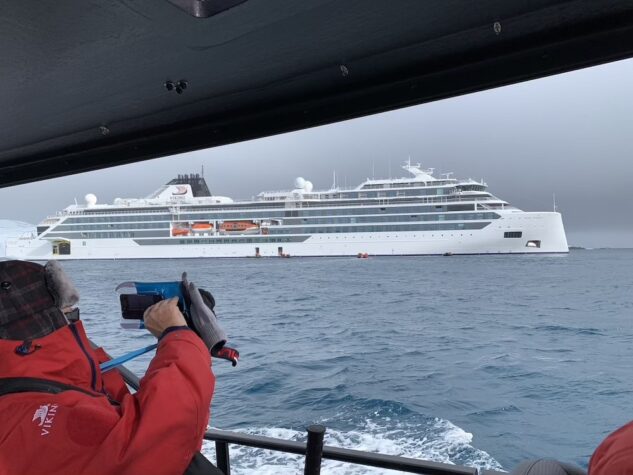
Polaris and Octantis represent a new breed of the expedition ship. Viking has already dominated the river and is booming in the ocean. Now the highly lucrative adventure and expedition sector is in its sights.
We’re heading for the Antarctic, a bucket list destination for so many but, in reality, a destination for just one per cent of us.
It’s a treacherous place for any sailor to ply her trade. Margrith says often: “It’s not a vacation, it’s an expedition!”
And so it is. Our Zodiacs take us to islands where we see penguins, seals, and whales – and that’s just on day one! Some guests watch aghast as a leopard seal turns a chinstrap penguin into a tasty lunch.
There is nowhere on earth where cruise passengers learn the nexus between species and survival so well – and our planet’s truly moody weather patterns.
“If you have a schedule, then forget it,” says expedition team leader Marc Jansen. We soon see what he means.
Captain Ettlin brilliantly outruns the weather, taking us to Half Moon Island at a temperature of just 5 degrees and wind speeds of 15 knots, allowing us precious hours to go ashore and see the wildlife.
Viking Polaris carries two submarines and they are out on the water by 7am. Zodiacs are rescheduled to take in the window – and as a result, we get amazing experiences on land, watching the penguins build their nests for the coming breeding season.
But by 2pm it is snowing and we are underway, outrunning 55-knot winds and a swell, sheltering next to a glacier for the night before setting off to our next adventure.
We remember the captain’s message: It’s not a vacation, it’s an expedition.
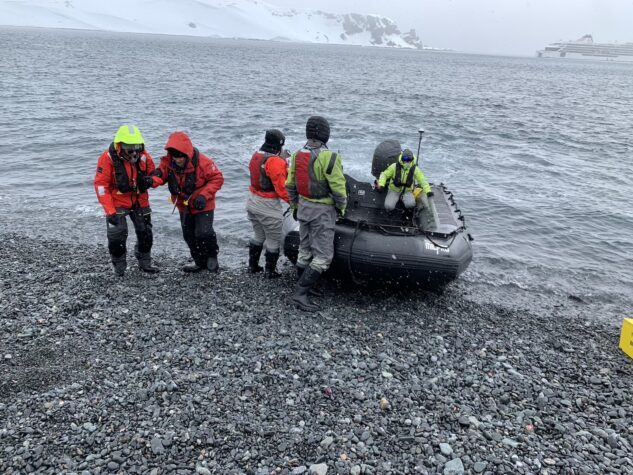
Guests are also reminded of this by the 20-strong expedition team, keen to recruit them to citizen science projects to monitor krill and plankton, and check whale tales (they are as unique as fingerprints). The Polaris has labs on board that take part in serious science – they report to NASA, and universities and have recently published their first scientific paper (bear in mind the ship is on her fourth journey since launch).
But there is more to her – which is why we think Viking might have done for expedition what it did for ocean: created a new class.
Polaris and her sister Octantis have blended real adventure with luxury cruising in a quite unique way.
There are many design references to the ocean fleet that took out the Best Ocean Line award in our Readers’ Choice Awards of 2022. Great food, fantastic cabin design – but more importantly a young expedition and scientific team full of enthusiasm. Australia has quickly become Viking Expedition’s second biggest market.
“Antarctica is a very special place and it’s such a privilege for any of us to come here, along with just 1% of the world’s population, says Viking Australasia MD Michelle Black.
“Australians are curious travellers and this is evident with Australia & New Zealand now Viking Expeditions’ second biggest source market.
“Forward bookings from the Australian and New Zealand market for Expedition voyages are healthy, with our 13-day Antarctica Explorer the most popular expedition itinerary and our three new Longitudinal World Cruises which incorporate Antarctica, exceeding our expectations.
“We recently launched our 2024 Expeditions brochure which included the introduction of South Georgia Island to our Antarctica program, which is already generating interest and forward bookings.”
Coming to Antarctica is indeed a privilege. And the Polaris team reminds us not just about the environment, but the vital importance of preserving this region’s extraordinary neutrality. It’s chock full of valuable minerals, and making sure it remains a pristine home for mother nature and that world powers keep their greedy hands off it is the subtext of our journey.
The crew supports the hope of the organisation that controls the region – The Antarctic Treaty is supported by Australia, as well as Argentina, Chile, France, New Zealand, Norway, and the UK : once you have been, you will become a global ambassador for its preservation.
Ship facts
- Total guest capacity of 378
- 189 outside staterooms with Nordic Balcony
- Sun Deck with 360-degree views & shaded sitting area
- Aquavit Terrace & Lounge, an indoor/outdoor area at the bow of the ship for al fresco dining
- Finse Terrace, an outdoor sanctuary with comfortable seating and lava rock ‘firepits’ perfect for
- The Aula, the most advanced venue for learning at sea with 270-degree views
- Viking Lounge & Bar with floor-to-ceiling glass doors
- The Living Room with floor-to-ceiling windows and a library that informs even the best read
- Choice of six dining options including The Restaurant our main dining venue, Manfredi’s Italian Restaurant, Mamsen’s Norwegian Deli, and the World Café.
- Library and onboard shop

